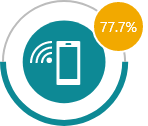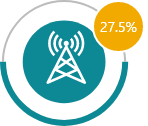BACKGROUND
Pakistan is ranked as the 5th highest TB burden country and annually contributes to nearly 5.8% of new cases of TB worldwide (WHO Global TB report, 2021). Out of the 573,000 new cases estimated for 2020, a total of 276736 (48%) were notified. [1] Bridging this case-detection gap is a key priority for the National TB Program. The 2019 evaluation conducted by World Health Organization (WHO) and Joint Program Review Mission (JPRM) recommended that, “Pakistan should take urgent action not only to find all persons affected by TB but also find them as early as possible to interrupt the chain of TB transmission”.
With 2,689 laboratory confirmed cases of MDR-TB and another 839 patients identified with XDR-TB in 2020, Pakistan is also included in the list of 30 High Burden countries for Drug Resistant TB. [1] , [2]
Affected by the COVID19 pandemic, country’s TB case notification dropped in 2020, however, in 2021, the health system is making efforts to revive its TB surveillance practices and the notification is steadily improving to reach 2019 levels.
In 2018, the National TB program, with support from WHO HQ and University of Oslo, introduced the DHIS2 aggregate data collection platform, which is being managed centrally by the Common Management Unit (CMU); for HIV, TB and Malaria under the Ministry of Health. Currently, the key challenges faced by NTP with this aggregated data system are delays in data upload (lack of real time data access) and the chance of duplicity of cases.
With the strong leadership and vision of the National TB Program, a clear roadmap has been With the strong leadership and vision of the defined in National Strategic Plan (NSP 2020-23) to leverage the current DHIS2 platform and develop a comprehensive case-based TB surveillance system on DHIS2 tracker. The NTP also envisages to expand DHIS2 system to all private providers for improving the private sector notification. Additionally , to complement the existing national HMIS data systems , the TB Data from DHIS2 can easily be integrated as indicators which enable comprehensive data review and analysis of TB data nationally.
It is empirical that technology penetration plays a vital role in enabling the evolution of information systems from paper to digital solutions. With about 77% of the population using a mobile phone and just around 51% smartphone penetrance, where internet access is only with about 27% population, the country requires a greater focus on the development of infrastructure to enable a smooth implementation of IT solutions.
Apart from implementing DHIS2 platform the NTP in Pakistan has a vision to leverage many other digital innovations for better data collection and data use as given below:
MATCH AI: The MATCH AI platform has been developed by The Royal Tropical Institute (KIT) and EPCON for TB case finding. This solution uses spatial, programmatic, and contextual data to better predict where missed people with TB are most likely to be found at the district and sub-district level. The objective of MATCH AI conceptual framework is to help close the TB case detection gap by focusing on high impact district and sub-district locations, a strategy promoted by the Zero TB Initiative.
CHS-HMIS: An internal patient health information management and field monitoring system known as CHS-HMIS. The system has four primary components: 1) a center-based module that allows for test booking, patient registration and TB recording and reporting; 2) a field-monitoring system that captures data from ACF camps, GP clinic locations, monitoring visits and PPM notifications; 3) a web-based dashboard and 4) a lab management system that allows for online reporting and viewing of test results for patients, including both for TB and other paid diagnostic services.
Based on the multi-stakeholder discussions, interviews and independent research, and guidance from the National TB Program, this assessment report is an attempt to describe the current capacity and identified gaps/ challenges in the digital ecosystem of TB surveillance. The report shares strategic recommendations for developing a comprehensive case-based surveillance system in the country while leveraging the existing infrastructure, in-house capacity, and assets.

STATUS OF CASE BASED TB NOTIFICATION
Currently the National TB program has been implementing primary two tools for TB surveillance:
DHIS2 based aggregated data collection system which is being used at all 150+ districts in Pakistan. Typically the manual TB registration forms are sent to the district office where the district data entry operator then feeds the data for TB cases initiated on treatment into the DHIS2 system. The current system also generates quarterly reports which are being accessed used at district, provincial and national program managers.
Excel based Electronic Nominal Recording Reporting System (ENRS) tool which allows capturing of individual DR TB cases through the entire cascade of care only for TB confirmed cases starting from Notification, monitoring, treatment outcome.
One of the biggest challenge highlighted by the NTP is that these two systems (DHIS2 and ENRS) are not integrated and hence currently both the systems are being used in parallel.
However, the vision for implementing a case based TB surveillance on DHIS2 tracker will be an important way forward to have a unified case based TB surveillance system for both DS TB and DR TB cases.
The NTP has put in place Mandatory Case Notification (MCN) guidelines that mandates a health provider to notify TB cases to the central helpline through an SMS. A helpline representative will collect the patient data and will upload in the DHIS2. This case-based notification is currently on pilot trial in four provinces of Sindh, Khyber Pakhtunkhwa, & Punjab. This pilot trial is expected to generate evidence for nationwide scale up of case-based TB surveillance system.
With support from Global Fund, the NTP is also in the process of designing and development of a comprehensive case-based tracker system on DHIS2 and, a pilot has been planned to be launched in Islamabad. The learnings from this pilot will pave the way to national scale-up of case-based TB surveillance system in the country.

ELECTRONIC TB NOTIFICATION DATA COLLECTION AND USE
| TARGET | CURRENT SCALE | COLLECTION TOOLS | DATA TYPE | DATA USAGE | |||||||
|---|---|---|---|---|---|---|---|---|---|---|---|

National Level
|
Data Not Collected from this level
|
DHIS2 Dashboard | |||||||||

Provincial
level
|
4 | Data Not Collected at this level | DHIS2 Dashboard | ||||||||

District Level
|
160 | 160 | DHIS2 Web Application | Aggregated | DHIS2 Dashboard | ||||||

Facility level
|
1600 | 1600 | ENRS Excel Tool | Case Based (DR TB); Aggregated (DS TB) | No digital tool for data use | ||||||

Community Level
|
Pilot sites | DHIS2 Tracker-Mobile App | Case Based | No digital tool for data use | |||||||

CASCADE OF CARE MONITORING
PRESUMPTIVE SCREENING
TB Testing
Treatment Initiation
Treatment Monitoring
Treatment Outcome
Contact Tracing






| KEY DATA VARIABLES | Yes/No |
|---|---|
| Demographic details (Age, DOB, Gender) |
|
| Address and contact details (Country, Division, District, House address) | |
| Geolocation (GPS coordinates of the household) | |
| Contact details (Phone number/Mobile number, WhatsApp, Email etc.) | |
| Health Facility address |
|
| Type of health facility (Public, Private etc.) |
|
| Site of TB (Pulmonary, Extra-pulmonary) |
|
| Type of diagnostic test (Microscopy, GeneXpert, TruNaat, CXR, etc.) |
|
| Date of test result | |
| Drug susceptibility (DSTB, DRTB) |
|
| Treatment Regimen | |
| Treatment start and end date | |
| Co-morbidity (HIV, Diabetes, COVID-19 etc.) | |
| Treatment monitoring/adherence | |
| Treatment outcomes |
|
| KEY INDICATORS | Yes/No |
|---|---|
| Presumptive screening (proportion) | |
| Treatment initiation (proportion) |
|
| Treatment monitoring/adherence | |
| Treatment outcome (proportion) |
|
| Spatial distribution of TB notification | |
| Age-group & sex wise aggregate numbers and proportions notified |
|
| Basis of diagnosis wise aggregate numbers and proportions notified |
|
| Type/site/drug resistance wise aggregate numbers and proportions notified |
|
| Provider source-wise aggregate numbers and proportions notified |
|
| Comorbidity wise aggregate numbers and proportions notified | |
| Key-population wise aggregate numbers and proportions notified | |
| Estimate/Target wise notification/treatment coverage (proportions) | |
| Provider-type disaggregated treatment outcomes (proportions) |
|
| Comorbidity disaggregated treatment outcomes (proportions) | |
| Key population disaggregated treatment outcomes (proportions) |
 Digital
(aggregated)
Digital
(aggregated)
STATUS OF ELECTRONIC CASE BASED TB SURVEILLANCE
Electronic System For Case Based TB Notification
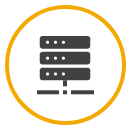
Currently only aggregated DHIS2 system available
Lowest Unit For TB Notification Digitisation
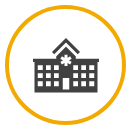
District level DHIS2 aggregated data (Facility level reports data in Excel sheets)
Stage Of Notification

Treatment initiation stage
Level Of Access And Use Of TB Notification Data
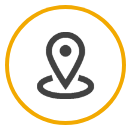
District level
Private Sector Notification

Manual notification process (Mandatory Case Notification with a helpline being piloted)
Frequency of digitization of TB notification

Quarterly
Mode Of Follow-Up With Notified Cases
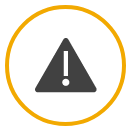
Manual notification process (Mandatory Case Notification with a helpline being piloted)
Scale Of Implementation
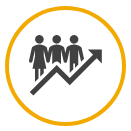
DHIS2 aggregated system is scaled at National level
Contact Tracing For TB Notified Cases
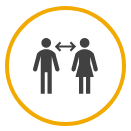
Not implemented yet
Multi-Channel Enablement

DHIS2 web application
Govt. order for mandatory TB notification

Mandatory case notification Govt. notice was passed and was linked with DHIS2 in 2020
PRIVATE SECTOR NOTIFICATION

Mandatory Case Notification (MCN) is a case-based notification guideline that mandates all health providers (private & public) to get in touch with a dedicated call center (and helpline) and submit TB patient data
COUNTRY IT CAPACITY
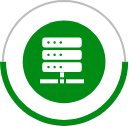
Country Server
Servers are managed by CMU (central unit), Ministry of Health, Pakistan
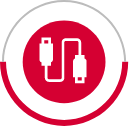
Interoperability
DHIS2 as a platform provides interoperability, but yet to be integrated
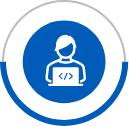
Country IT team
Limited capacity - DHIS2 experts with CMU team. Technical support sought from partner agencies
CURRENT RESOURCES AVAILABLE
USD 1.5 Million was invested from 2018-2020 for the development of the current DHIS2 aggregate system.
USD 833,000 (2.5 Million for 2020-2023) is needed as annual recurring cost towards Servers, Human resource- DHIS2 developers, Ongoing Training, Hardware. (NSP 2020-23).
C19RM has been approved for piloting and scaling of digital case-based TB notification system.

MILESTONES ACHIEVED AND ROAD MAP
2018
National TB notification system is built on DHIS2 aggregate data model, supported by Global Fund
2019
Development of dashboard with quarterly reports
2020
Case based pilot was done in 2020 using DHIS2 tracker with case based Dashboard. Mandatary TB Case Notification (MCN) announced
2023
Developing modules for finding missing cases (starting from presumptive case) and hotspot mapping, data security and confidentiality improvements, admin control and data access control. Linking the platform to the patient Last mile connect with the patient WhatsApp notification
2021
Piloting and expansion of DHIS2 tracker to all districts with Global Fund C19RM support already being approved.
2022
Scale case-based TB notification DHIS2 tracker across all 1600 facilities and integration of LIMIS/GxAlert with DHIS2 at aggregated level.
2024
Scaling up of contact tracing, TPT, Cross border TB notification, Transfer in- transfer out modules. Integration with Logistic management system at individual case-based level with treatment regiment, where stock directly gets deducted in the LMIS

OTHER COMPLEMENTING DIGITAL TOOLS
| Purpose | Tools | Channel | Developed By | Supported By | Scale |
|---|---|---|---|---|---|
| Digital Adherence | Nil | NA | NA | NA | NA |
| Logistic Management System | TB DMIS | Web Application | Ministry of Health | USAID | National |
| Laboratory Information Management | GxAlert | Web Application | Cepheid | Information not available | National |
| Digital X-Ray | Web Application | DELFT CAD4TB | The Global Fund | Pilot | |
| Community Led Monitoring (for contact tracing) | OneImpact | Mobile App, Social Media | Dure Technologies | Stop TB Partnerships | Pilot |
| Contact Tracing | Nil | NA | NA | NA | NA |

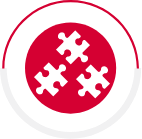

KEY CHALLENGES

Lack of single, integrated platform for reporting and analyzing PPM and ACF interventions in real time, that can be used by all partners in Pakistan.

CHS-HMIS is not integrated with DHIS2 or the MATCH AI platform, and the system operates as a standalone service. TB records and forms while entered digitally are printed subsequently and entered manually for routine reporting to the TB program. Linkages of this dataset within the MATCH AI-DHIS2 system can potentially yield valuable information for improving programmatic performance in the country.

Inadequate server capacity (shared server hosting with other programs) and lack of in-house technical support team for configuring the DHIS2 system and its maintenance, which creates delays and restricts ongoing enhancement.

Lack of adequate finances and Human resource, and Poor IT infrastructure at facilities for digital notification.

Challenges with limited digital literacy, and insufficient ongoing capacity building and training of health staff.

Lack of availability of hardware devices for HCW for field activities.
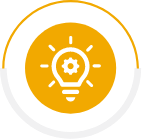
NTP VISION
- ❖ Develop a mobile based real-time case-based TB notification at the lowest unit (pilot already planned).
- ❖ Monitoring of entire cascade of care starting from presumptive case screening.
- ❖ Seeking resources for enabling a case-based TB notification system.
- ❖ Enabling Private sector notification directly into the future case-based notification system.
- ❖ Integration of the logistic management system (TB DMIS) with the DHIS2 based system.
- ❖ Integration of cross-border TB efforts (being implemented by UNHCR) into the centralised TB notification system.
- ❖ Mechanisms to reduce duplications- centralization of system and UI.
- ❖ Integration of CLM- Mercy Corp and Stop TB REACH solutions.

RESOURCES NEED
Based on multi-stakeholder discussions, country feedbacks and recommendations for full-filling country’s vision, we have put together an estimated investment requirements and areas needing support for provisioning of a comprehensive case based digital TB surveillance system
Hardware and Infrastructure :

Mobile Devices (for data collection) : Pakistan has 1600 TB units and to provision mobile device for every facility for case-based TB surveillance, USD 240,000 will be needed assuming USD 150 per mobile devices.

Tablet (for data use) : Pakistan has 160 Districts and 4 Provinces units, 30 DR-TB units and 63 provinces to promote active data use, each district and region should be given a tablet which would cost roughly around USD 32,800 assuming USD 200 per Tablet devices.

Internet : In case WiFi is not available in each facility, then mobile internet cost of around USD 176,400 should be considered (assuming USD 100 mobile data cost for the entire year per facility, district and regional user).

Server : Based on the current volumes of new cases, Pakistan would need an investment of USD 30,000-40,000 for next 3 years for server and server maintenance.
Note: Existing devices available through other health programs can be leveraged. In that case, the above-mentioned costing can be accordingly considered.
Software Development :

Based on various multi-stakeholder meetings and given the fact Pakistan already have a foundation for DHIS2 aggregate system for TB, around USD 50,0000-1,000,000 should be budgeted for a comprehensive TB surveillance system and analytical dashboard for data use.
Capacity Building and Implementation :

After the software development, a dedicated pool of technical resources will be needed to support platform administration, data management and support. A team of 4- 6 skilled resources attributing to a cost of around USD 48,000-72,000 per annum should be budgeted (or USD 144,000-216,000 for 3 years assuming USD 1,000 per month per resources). Additionally, reskilling of the current IT team should be budgeted.

Training: This would involve training material development and onsite and remote training of the trainers. Four training sessions should be planned for each 160 districts over a period of 3 years which could cost roughly USD 100 per training amounting to USD 16,000. Also, a dedicated trainer should be budgeted in case there is none. E-training options with necessary modules also need to be considered.
TOTAL investment of around USD 1.5 - 2 million for 3 years will be needed on developing a comprehensive case-based digital TB surveillance system for Pakistan.
Disclaimer: The above budget is a function of number of facilities, districts and regions and expected volume of data. This only provides a ballpark figure of what is needed in terms of budget.

The National TB Control Program Pakistan, under the visionary leadership of the Common Management Unit to fight against AIDS, TB & Malaria, Ministry of National Health Services, Regulations & Coordination, has achieved a revolutionary milestone towards digitization by rolling out of case based DHIS2 in the year 2021 for effective TB surveillance in the country with the support of national and international partners.


Pakistan

Dr. Abdul Wali Khan|NTP Manager

Recommendations
Following are some of the key recommendations suggested based on the findings of this assessment of country’s digital ecosystem and infrastructure:

Strategic Costing Plan
As a first step it is important for the country to create a comprehensive costed action plan for development, implementation and scale up of the TB case based surveillance system.
Based on NTP’s vision and the recommendations for improvements, the plan should clearly define targets with actionable interventions and funding requirements supported with a detailed work plan along with timelines. The plan will help the country to assess and monitor the progress to ensure that any risks can be duly mitigated.
Tentative timeline: Month 0-1

Device Procurement
One of the limitations highlighted by NTP is the need to improve the data collection processes at the facility level. To streamline this, procurement, distribution and maintenance of the required data entry equipment like laptops, mobile/tablet devices should be done on an urgent basis. Improving the current infrastructure at the facilities is crucial for a complete transition to digital notification.
Tentative timeline: Month 0-6

Implementation of TB Case Based Notification systems
The NTP has already established DHIS2 environment which has the core infrastructure in terms of database and deployment environment. It has built the DHIS2 expertise and capacity which acts as a strong foundation for executing the vision of creating a comprehensive and integrated real-time case-based TB surveillance and notification system
It is recommended that this existing capacity is leveraged for developing DHIS2 tracker for creating case-based notification system which accommodate monitoring of entire continuum of care for both DS TB and DR TB patients starting from presumptive screening, referral, testing, treatment initiation, treatment adherence, treatment outcome and contact tracing in real-time.
The solution architecture should support adding all the above components in phases supported with versioning to ensure seamless upgrades and continuity. Some of the existing templates already built on DHIS2 tracker systems currently being used by other countries such as WHO’s prevent TB tool or other DHIS2 tracker-based systems can be explored for fast-tracking the software development processes. [6]
Tentative timeline: Month 0-6

System Integration
One of the challenges highlighted by NTP is the leveraging the data collected from the multiple sources into the main DHIS2 systems as a central system for effective use.
The current DHIS2 platform and infrastructure needs to be extended to support integration with external systems like GeneXpert,TruNat, Digital X-Ray outputs, Pill boxes and other digital adherence tools which help in use the data effectively for the continuum of care as highlighted by the NTP.
Recommended exchange / ETL tools like Talend , Informatica which include these features make the data management task much easier and simultaneously improve data warehousing should be evaluated. [7.1] , [7.2]
The data exchange process should follow and comply with FHIR , GDPR standards for more secured and seamless data exchange supporting standard data taxonomy and meta data management processes. The DHIS2 platforms architecture is easily compatible with these standard tools and processes making this an effective solution. [8.1] , [8.2]
Tentative timeline: Month 6-12

Capacity building for application maintenance
One of the main challenges highlighted by the NTP is the ongoing maintenance and enhancements of the platform. Since the application requires regular updates and to ensure effective adaptation and scale up the system support team requires personnel trained on DHIS2.
Strengthening the NTP team with trained system administrators will help in reducing costs (in seeking technical support) and improving and expediting the planned implementations.
Tentative timeline: Month 0-6

Data Use
The NSP 2017-20 clearly emphasizes on the importance and need for improve data use. This can be made possible by making case-based TB data and patient line listing available at the lowest level health functionary involved in TB care.
Building on the current DHIS2 visualization module which offers a comprehensive dashboard for reviewing of program and data indicators, additional features of pivot table , event reports which support dimensions , data aggregation reports and individual line lists and with timeline views are extremely useful.
As expressed by the NTP, the recommendation is to first upgrade the current aggregated DHIS2 based Dashboard and leverage the fullest potential.
Also , to ensure that there is a seamless data exchange from ENRS, LMIS without any information loss and to effectively use data from Match AI , TB – DMIS the DHIS2 data transformation API should be explored.
There may also be some other distributed data collection systems and processes which are existing, and it might be difficult to replace them, in such a scenario data can be extracted, transformed and loaded into the central database.
This DHIS2 data transformation API feature also offers creation of standard templates which can be easily mapped with external data collection tools. [9.1] , [9.2]
Other source ETL tools over Postgres DB and / or WHO powered XMart which can be installed within the current environment can also be considered. [10]
Once a robust data analytics and data use has been established with the current DHIS2 and other systems then a more advanced analytical dashboard should be designed linked to the new case-based TB surveillance system that is already being planned.
To achieve this , and to strengthen and expand the data visualisation scope and making effective use of data for predictive modelling , data science and for advanced analytics it is also recommended to use best of the breed tools like Tableau , Power BI which offer these features. The current DHIS2 platform offers APIs which can connected for these applications and be used as an extended analytical component of the data analysis framework. [11]
Tentative timeline: Month 6-18

Mobile Use
As the NTP already have a vision to implement mobile based TB surveillance, it is recommended that the model is first piloted and validated in the top 10% most high burden facilities in Pakistan. This will help validate the solution in a short period with effective cost.
In addition, the Mobile App for data collection should also have treatment supervisor specific Dashboard and case management module to handle individual cases better in terms of follow-up, alerts and other care interventions.
As a recommendation the latest DHIS mobile app version which has additional features on data collection , security ,offline data collection , encryption etc supported with a configurable set up should be evaluated to fast track the development of the changes from the learnings of the pilot and for the national scale up.
The DHIS2 mobile application has features for auto – alerts and aggregated data set analysis which should be enabled for improved data use. DHIS2 Mobile app also supports features for restricted data access for different user groups , , version management which make this as more robust solution. [12]
Tentative timeline: Month 6-12

Data Quality
NTP clearly emphasizes on the importance and need to introduce improved data collection practices and validations to avoid data duplicity and redundancy for better data quality.
Some standard recommendations include: UIC Code : Having a centralized Unique Patient ID system or leveraging existing national ID supported with an improved search functionality can help drastically reduce the duplication of case-based records.
✓ DHIS2 data de-duplication feature should also be explored which would enable restriction of multiple case data entries based on patient profile and other variables configuration.
Additionally , as part of standard practices, the application(s) / solutions should follow the data quality mechanisms or the Data Quality Assurance (DQA) framework. [13] Some recommendations include
✓ Data Validations for data inputs at every level
✓ Retrieval of existing user driven values / attributes to avoid data discrepancy
✓ Smart follow up questions to validate previously entered data.
These standard practices are configurable using the DHIS2 ruleset feature which is applicable to both web / mobile app interfaces. This will ensure that the data collected from multiple sources is in a standard structure and format.
Data access control is another DQA measure that will regulate user’s access to meta-data. It will involve the principle of least privilege (POLP), i.e., user’s access will be determined based on their role in the project. POLP will define and limit what data they have access to and who has that access. [14]
This can be implemented using the DHIS user access and data management feature for restricted data access and control. Apart from this DHIS2 admin also has privileged access to configure the user data roles.
Tentative timeline: Month 3-6

Community Monitoring Systems
As expressed by the NTP, the national TB notification and surveillance system should have necessary mechanism to integrate with ready-to-use open source CLM platforms like One Impact.
Tentative timeline: Month 6-12

Modules for Migrants
Pakistan receives a huge number of migrant workers from neighbouring borders such as Afghanistan and similarly a large number of migrant population crosses borders from Pakistan to other neighbouring countries. In order to strengthen the cross-border TB initiatives, it is recommended to accommodate additional cross border modules like transfer-in and transfer-out that would help track treatment across borders and also help reduce large number of lost to follow-up cases attributed to cross border migration.
The cross border monitoring platform (built on DHIS 2.34) developed by UNDP under the Global Fund multi-country grant can be integrated with the DHIS2 tracker in future.
Tentative timeline: Month 0-6

Patient Interactive Systems
Tracking lost to follow-up cases is highlighted as one of the main challenges given the high migrant population.
Establishing a direct and secured mechanism for engaging with patient has potential for drastic improvements in tracking lost to follow-up patients. Auto generation of notification and messaging by the system through communication channels like Social Media channel, IVRS and SMS outbound messages should be explored. Open-source applications like Open MRS can be used for these activities. [15]
Tentative timeline: Month 12-18

E-Learning
Any national scale roll-out will have its own capacity and training challenges which requires development of a comprehensive eLearning module allowing all health staffs involved in data collection process for training not only on the new eTB tracker-based application but also on the latest manual of procedure and continued medical education on TB care.
To address the challenges with periodic training of facility level staff to orient them on using eTB for direct data reporting, the MOH must engage in development of a comprehensive eLearning module for app training.
While DHIS2 offers standard training modules on the application , training tools like Moodle [16] built on standard LMS framework can be reviewed for application rollouts.
Additionally for training and updates on the latest manual of procedure and continued medical education on TB care modules can be developed for TB Health providers, administrators at facility and district level to develop and enhance M&E competencies for ensuring a consistent program oversight specially for the case-based tracker roll out within the existing applications.
Guide TB platform developed by WHO Philippines is a good example of eLearning module for health staffs involved in TB care.
Tentative timeline: Month 0-3

Strategic Technical Recommendations
Application Upgrades including Server Augmentation & Infrastructure Upgrades : To make sure that systems implementation and scale up of application is supported well, the key need is to have a long-term strategic plan that would cover the technical and operational objectives.
The strategy recommended would cover the following core areas
✓ Technical Upgrades: Based on the architecture, the upgrade would be done with the database, a middleware system, the operating system or the hardware.
Additionally, the architecture should support the integration layer which would be needed for data exchange with other national / external systems. The technologies that need to be brought in and the areas of inter-connection need special focus.
Recommended data system architecture would include updating the version of the current DHIS2 to 2.34 which offers better features on data management , encryption and exchange standards.
Additionally, the advance admin features offered by this version help the administrators to support the operational needs better for onboarding users , real time change in data variables and user management etc effectively.
Apart from this version 2.34 also supports compliance to GDPR standards and offers more controlled data encryption practises. [17]
✓ Performance Optimisation & Testing : To support the national scale up and implementation strategies it is very essential to have system(s) and application testing done to enable a reliable platform and which also helps in architecture updates and augmentation.
While core teams from the user community who are involved in the testing learn and automatically get trained, Automated System and Application Testing tools like Selenium and Appium also may be considered. Load Testing tools which helping in data base sizing and planning need to be adapted for effective planning. [18]
✓ Application & System Security Audit
To strengthen the current systems framework and ensuring long term sustenance it is important to have regular evaluation of the security of the information and systems by measuring how well it conforms to an established set of criteria.
These would also include developing a framework which should outline policies in line with recommended standard policies like HIPAA [19.1], [19.2] to cover
• Patient Data Management
• Server & Infra guidelines
Apart from application measures offered by DHIS2 [20] for patient data security , hosting solutions offered from Azure also cover these as part of their deployment options which can be considered as part of systems hosting. [21]
ACKNOWLEDGMENT
We thank the National TB Program Manager Dr. Naseem Akhtar and the entire team for participating and engaging in the assessment. We would also like to extend our gratitude to Dr. Bushra Jamil and Dr. Razia Fatima for providing valuable insights into Pakistan’s vision for creating a comprehensive case-based TB surveillance and notification system.
CONTACT DETAILS
Block E & F, EPI Building, Near National Institute of Health (NIH) (Prime Minister’s National Health Complex), Park Road, Islamabad, Pakistan
Telephone : + (92-51) 843-8082-3
Email : ntpmanagerpak@ntp.gov.pk
Fax : : + (92-51) 925-5086 Att: NTP
Helpline: : 0800-88800
REFERENCES
- TB Data References : https://worldhealthorg.shinyapps.io/tb_profiles/?_inputs_&entity_type=%22country%22&lan=%22EN%22&iso2=%22BD%22.
- TB Data References : http://www.stoptb.org/countries/tbdata.asp.
- Digital Landscape: https://newzoo.com/insights/rankings/top-countries-by-smartphone-penetration-and-users/
- Digital Landscape : https://datareportal.com/reports/digital-2021-pakistan.
- Digital Landscape : https://www.statista.com/statistics/321485/smartphone-user-penetration-in-pakistan/
- DHIS2 Meta Data Tools : https://dhis2.org/metadata-package-downloads/#tb
- System Integration Tools ( Talend , Informatica ) : https://www.talend.com/index.php, https://www.informatica.com/
- DHIS2 Communities on DHIS2 using GDPR guidelines : https://community.dhis2.org/t/how-does-dhis2-protect-personal-information-the-tech-details/5335
- DHIS 2 API & DHIS2 Data Transformation Services : https://docs.dhis2.org/en/develop/using-the-api/dhis-core-version-235/web-api.html , https://docs.dhis2.org/en/use/user-guides/dhis-core-version-236/maintaining-the-system/importexport-app.html
- WHO Xmart : https://portal-uat.who.int/xmart4/docs/general/Overview.html
- DHIS2 Power BI : https://community.dhis2.org/t/dhis2-to-powerbi-connector-is-ready-check-out-the-video-test-it-use-it-and-give-us-feedback/37043
- DHIS2 Mobile App : https://dhis2.org/android/.
- DQA Guidelines : https://www.who.int/data/data-collection-tools/health-service-data/data-quality-assurance-dqa
- DHIS2 & DQA : https://dhis2.org/who-dq/
- OPEN MRS : https://openmrs.org/
- Application Training Tool : https://moodle.org/
- Features of DHIS 2.34 : https://dhis2.org/overview/version-234/
- Performance Tools ( Selenium , Appium ) : https://appium.io/, https://www.selenium.dev/
- HIPAA Compliance Framework : https://www.hhs.gov/hipaa/for-professionals/security/laws-regulations/index.html, https://www.hipaajournal.com/considered-phi-hipaa/
- DHIS Security : https://dhis2.org/security/
- Azure Hosting Services : https://docs.microsoft.com/en-us/azure/compliance/offerings/offering-hipaa-us
